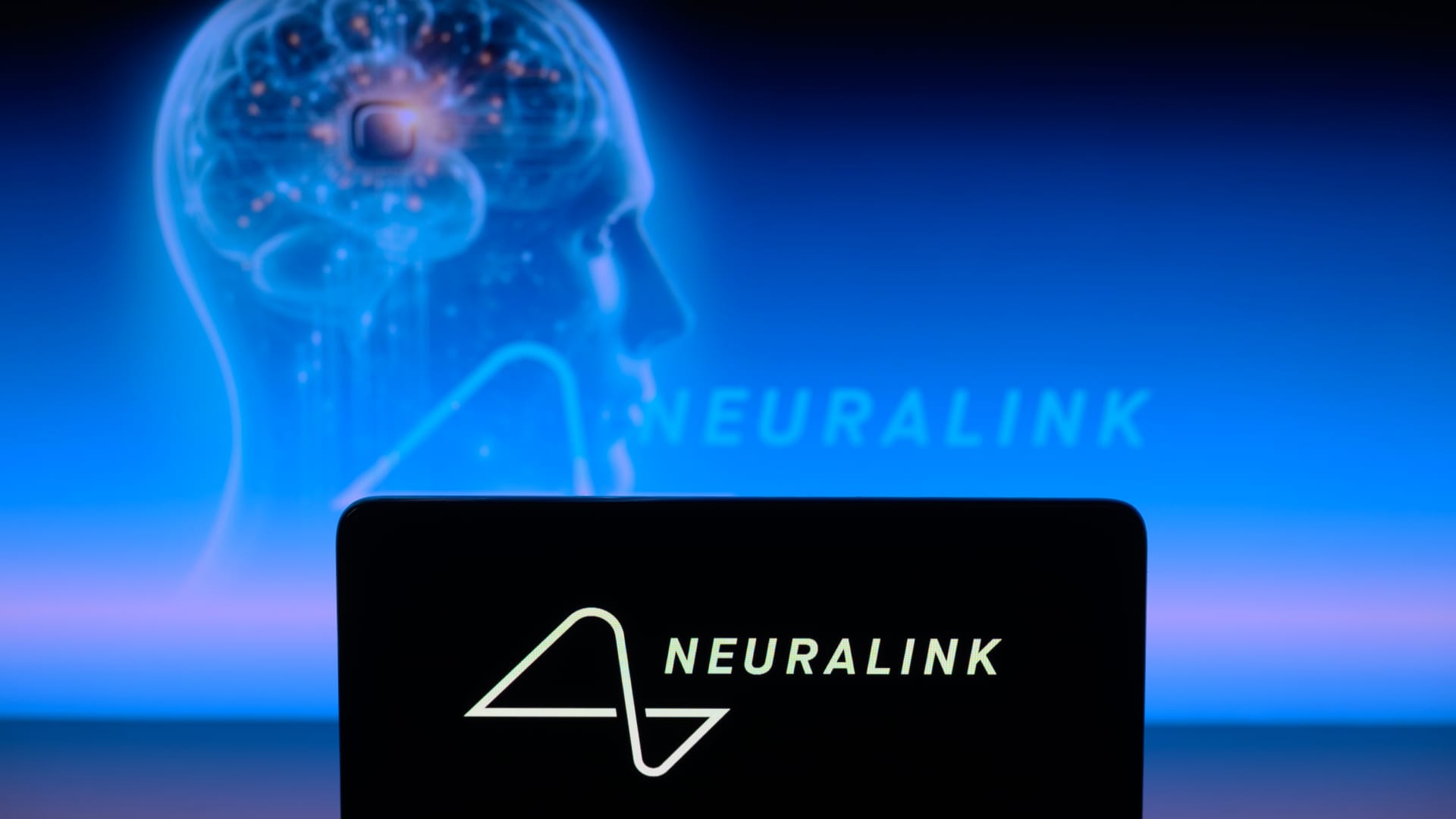Elon Musk’s startup Neuralink streamed a live video on Wednesday that showed a patient using the company’s brain implant to move a mouse and play chess on a computer.
Noland Arbaugh, 29, is the first human patient to ever get implanted with Neuralink’s device. The company is developing a brain-computer interface, or a BCI, that aims to help patients with severe paralysis control external technologies using only neural signals. Neuralink’s first product is called Telepathy, Musk said in a post on his social media site X in January.
In the video Wednesday, which was streamed on X, Arbaugh said he became a quadriplegic after suffering a diving accident around eight years ago. He said the surgery to get Neuralink’s implant, which requires patients to remove a portion of their skull to insert electrodes into the brain tissue, was “super easy.” He was released from the hospital the next day, he said.
“It’s not perfect, I would say that we have run into some issues,” Arbaugh said. “I don’t want people to think that this is the end of the journey, there’s still a lot of work to be done, but it has already changed my life.”
A BCI is a system that deciphers brain signals and translates them into commands for external technologies. If they function properly, patients with severe degenerative diseases like ALS could eventually use these systems to text or scroll through social media with their minds.
Several companies like Paradromics, Synchron, Blackrock Neurotech and Precision Neuroscience have developed BCI systems with these capabilities, and many of them have also implanted devices in human patients. Neuralink is particularly well known in the field in part because of the high profile of Musk, who is also the CEO of Tesla and SpaceX.
In many ways, the capabilities Neuralink demonstrated in its video Wednesday are not new. Dr. Nader Pouratian, chair of the Department of Neurological Surgery at UT Southwestern Medical Center, said researchers have been developing and studying BCI technology for years.
“There are things that we’ve been able to do for decades, like control a cursor in two dimensions, which actually, for those of us who are in the field, is extremely simple to do as soon as you can get any brain signal,” he told CNBC in an interview earlier this month.
He said there is a lot of excitement around BCIs, but there are also still a lot of practical challenges to work out, like how to interpret and analyze brain signals and make them useful. He said he thinks transparency from both academia and the broader BCI industry about advancements will be key for progress.
Neuralink began recruiting patients for its first in-human clinical trial in the fall after it received approval from the U.S. Food and Drug Administration to conduct the study back in May, according to a blog post. In January, Musk said the company implanted its device in a human for the first time, and that the patient, now revealed to be Arbaugh, was “recovering well,” according to a post on X.
Aside from Musk’s posts, Neuralink has shared very few details about the scope or the nature of its trial. As of Wednesday, the trial is not listed on the website clinicaltrials.gov, which is where most medical device companies share information about their research to help inform the public and other health-care professionals about their ambitions.
It is not clear how many patients are participating in Neuralink’s trial, or what the trial is trying to demonstrate. The company will have to go through several rounds of safety and efficacy testing before it can clinch the FDA’s final seal of approval and go to market.
Neuralink did not respond to CNBC’s request for comment.
There is reason to be hopeful about Neuralink’s technology, said Dr. Marco Baptista, chief scientific officer of the Christopher & Dana Reeve Foundation, which provides resources to people that become paralyzed. He told CNBC in early March that BCI technology could make a meaningful impact on patients, but like all emerging devices, Neuralink’s system should be regarded with skepticism.
He said he would like to see more traditional scientific reports from Neuralink to learn more about its technology, for instance. Neuralink is listed as an author on one white paper from 2019, according to PubMed.
“I’m hopeful that this information will start to come out through these mechanisms that are needed in science, and that is through peer reviewed publications,” he said. “That hasn’t happened yet. Other companies are doing it.”
